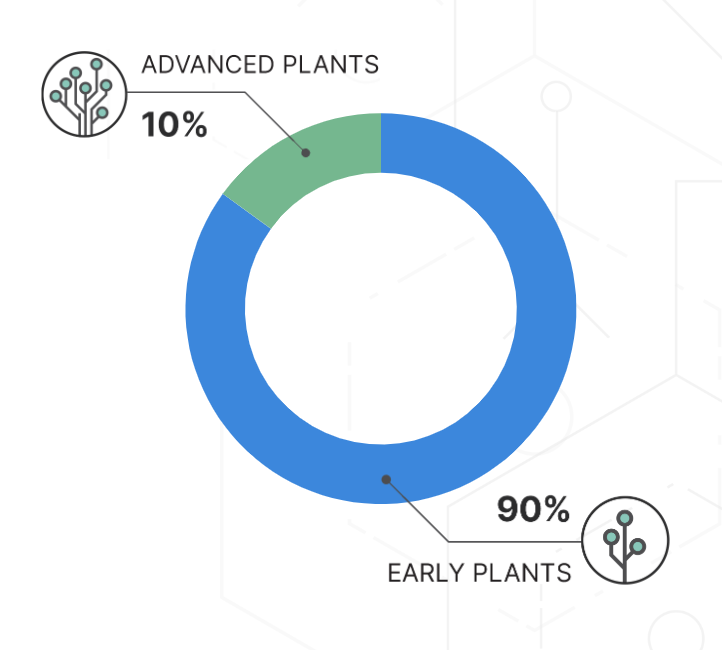From Chaos to Clarity: How Value Intelligence Unifies Manufacturing Improvement Programs
A Centralized System Can Align Lean, Digital, and Compliance Initiatives into One ROI-Driven Roadmap
Across the manufacturing world, improvement is everywhere — but alignment is rare.
Step inside any global manufacturing enterprise, and you’ll encounter an array of well-intentioned initiatives underway. A Lean team is focused on reducing waste and improving cycle times. A digital innovation team is testing AI-powered quality tools. ESG leaders are tracking emissions and launching energy-efficiency projects. Meanwhile, the finance function is pushing for tighter cost control and faster ROI.
Each of these programs serves a legitimate purpose. Each is often driven by smart, capable teams. But collectively, they tend to resemble a patchwork — not a plan.
And that’s the core issue: Fragmentation.
Despite the best intentions, these improvement efforts often operate in silos, disconnected from one another and from a unified strategic agenda. They use different tools. They report to different functions. They track success in different ways. And critically, they compete for the same limited resources — time, attention, capital — without a shared lens on value.
As a result, factory leaders face initiative overload. Corporate leaders struggle to see what’s working. And organizations fall into a pattern of “activity without traction” — lots of movement, very little momentum.
The Root of the Problem: No Common Framework for Value
At the heart of this fragmentation lies a deeper challenge: each team defines value differently.
- Operational Excellence teams frame problems in terms of losses — downtime, changeovers, rejects, productivity gaps.
- Digital teams focus on tools — predictive analytics, AI algorithms, machine connectivity.
- ESG functions prioritize metrics like carbon footprint, water usage, and compliance.
- Finance speaks the language of ROI, NPV, and payback periods.
None of these perspectives are wrong. But without a shared value framework — a way to translate all these perspectives into a unified understanding of impact — organizations cannot make coherent, strategic decisions.
Instead, they default to tactical trade-offs:
- Which initiative gets the next pilot?
- Which function’s KPI takes precedence?
- Which project gets funding — and which one stalls?
This is not a resource problem. It’s a governance problem. A prioritization problem. A value intelligence problem.
The Case for a Centralized Value Intelligence System
What manufacturers need today is not more tools. Not more pilots. Not even more ideas.
They need a system that brings all initiatives — Lean, digital, compliance, cost-focused — into a single, enterprise-wide pipeline of prioritized, high-ROI actions.
This is the role of a Value Intelligence platform.
At its core, a Value Intelligence system gives manufacturing organizations a structured way to:
- Identify and quantify operational losses across every factory, process, and function.
- Translate improvement opportunities — regardless of their origin — into financial outcomes that can be compared apples-to-apples.
- Prioritize initiatives based on impact, readiness, and strategic fit — not influence or gut feel.
- Track progress against targets across the entire network, from pilot to scale.
It’s not just about visibility — it’s about governance, alignment, and value realization at scale.
SmarterChains: Turning Disconnected Projects Into Unified Roadmaps
This is precisely what SmarterChains was built to solve.
Our Value Intelligence platform is designed to unify all forms of improvement into a single, coherent decision-making engine.
It begins by baselining performance using a standardized loss framework — across equipment, labor, materials, energy, and more. This is not limited to Lean-centric waste. It includes inefficiencies that digital solutions can address, ESG-related losses, and financial blind spots.
Once losses are identified, our platform doesn’t just flag problems — it quantifies opportunities. Each improvement initiative is tied to a clear financial projection: how much waste can be recovered, what the investment would cost, and how fast the returns will come.
Whether the intervention is a kaizen event, a cloud-based analytics rollout, or a water-reduction project — it enters the same value pipeline.
From there, leadership teams can evaluate, prioritize, and track each initiative with a full-picture view:
- Which ones drive the most value, fastest?
- Which ones are scalable across factories?
- Which are redundant or low-impact?
- Where are cross-functional synergies?
SmarterChains acts as the operating system for transformation — translating strategy into execution with clarity and accountability.
A New Model for Manufacturing Leadership
In an era where capital is scrutinized, complexity is rising, and execution speed matters more than ever, traditional models of improvement leadership are no longer sufficient.
It is no longer enough to “do Lean” here, “go digital” there, and “manage compliance” somewhere else.
What’s needed is a central nervous systemfor operational value — one that transcends functional silos and provides a single, enterprise-wide lens for prioritization and progress.
SmarterChains offers manufacturers exactly that. It doesn’t replace your Lean team, your digital team, or your ESG programs. It unifies them.
And in doing so, it unlocks the real promise of transformation: a manufacturing organization that doesn’t just improve — it improves with precision, with alignment, and with purpose.
If your enterprise is tired of disconnected initiatives and ready to run improvement like a business — it’s time to build your value pipeline.
Start with insight.
Start with impact.
Start with SmarterChains.
 | Discover Untapped Potential in Your Manufacturing ProcessPrepare, define, and execute the Industry 4.0 strategies at scale.
|
You might also enjoy:






